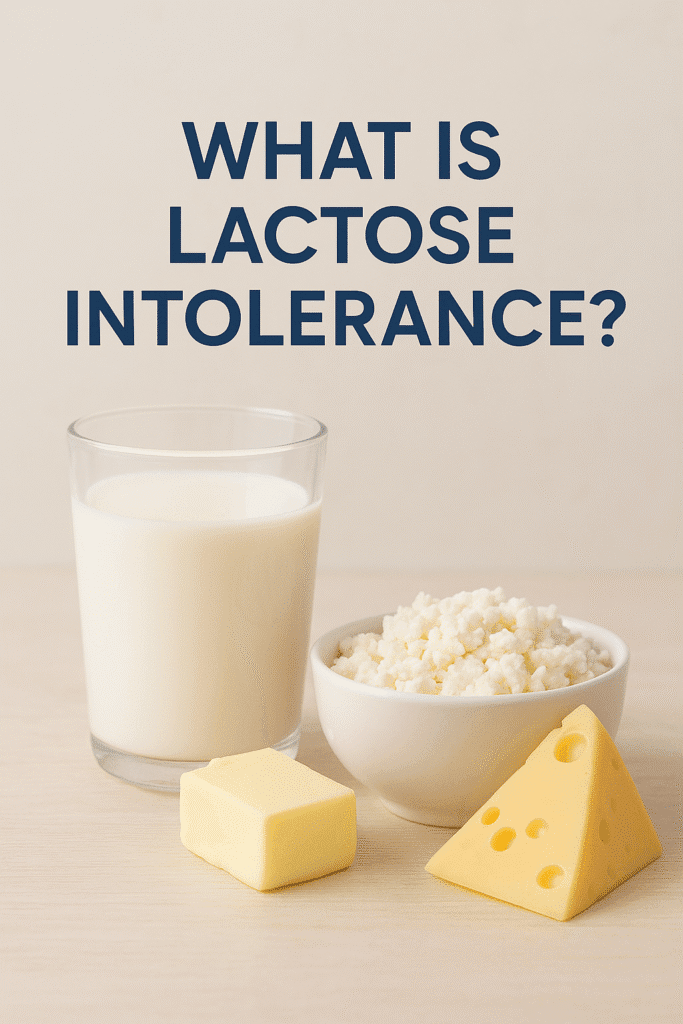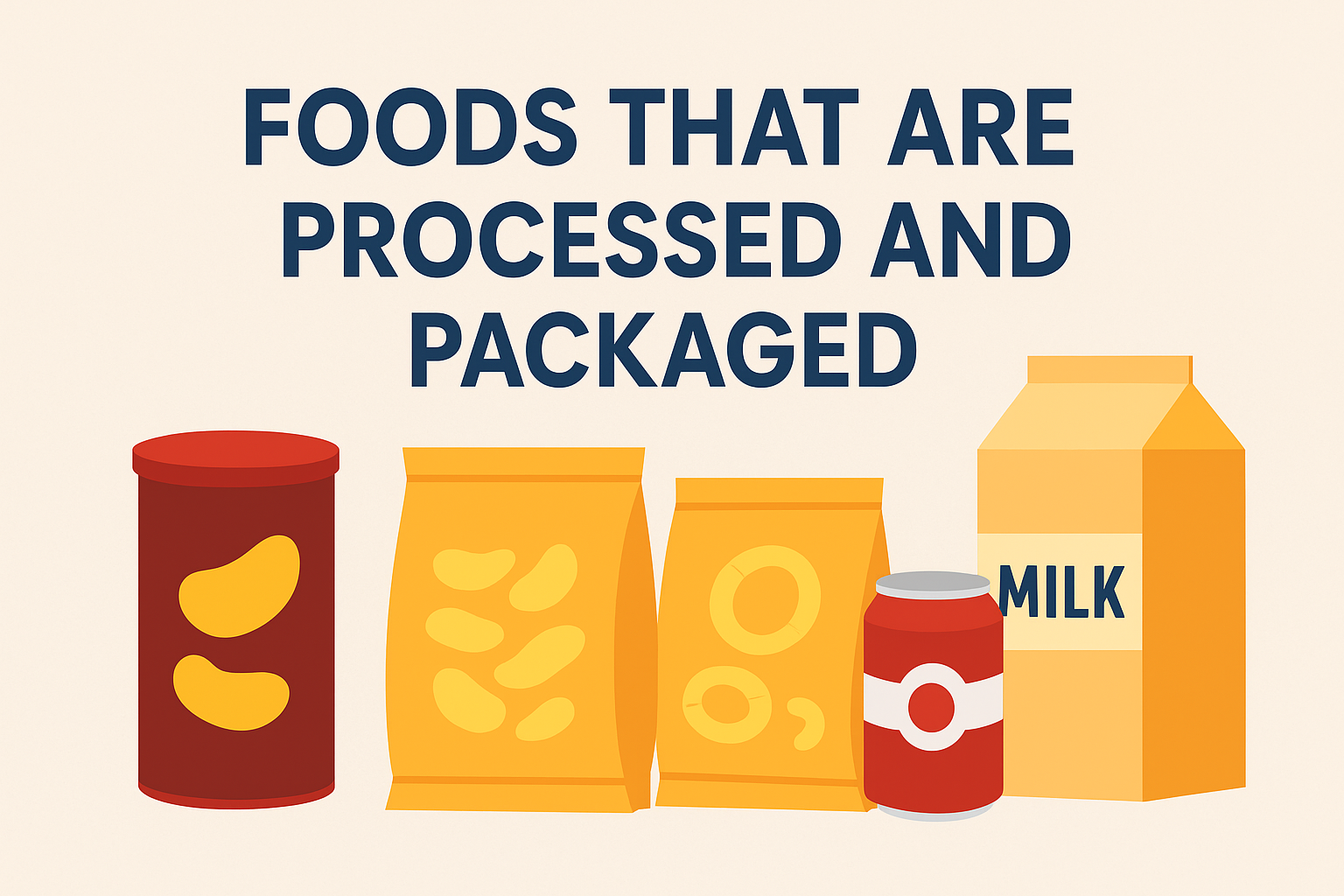One of the most widespread digestive problems that afflict millions of individuals across the world is lactose intolerance. It arises due to a deficiency of lactase enzyme that breaks down lactose, the natural sugar found in milk and dairy products. Lactose that is not digested correctly leads to such symptoms as, bloating, gas, pain in the abdomen, and diarrhea. Learning what to avoid, and how to make a lactose-free diet are the keys to managing the symptoms and ensuring a good diet.
We will discuss the foods that are found to contain lactose, the secret sources of lactose, and the safe foods that promote a healthy digestive system and the avoidance of a discomforting feeling.
Knowing Lactose Intolerance
A milk allergy is not lactose intolerance. Whereas milk allergy is a response of the immune system to the milk proteins, lactose intolerance is a purely digestive disorder that is due to a low level of lactase enzymes in the small intestine.

The degree of intolerance differs, some individuals may tolerate small doses of lactose, and others respond to the smallest traces. The causes involve the imbalance between primary (genetic) and secondary (damage to the intestinal lining caused by infections or such diseases as celiac disease or Crohn’s disease) varieties.
Symptoms of Lactose Intolerance
Stomach swelling or bloating following consumption of dairy.
- Cramping or abdominal pain
- Diarrhea or loose stools
- Flatulence (gas)
- Nausea
Lactose Intolerance Foods to Avoid
Since a lactose-free diet is necessary, it is important to know which foods contain a lot of lactose. Milk is the most obvious one, lactose is hidden in a variety of other foods.
Milk and Milk-Based Beverages
Regular cow’s milk, goat’s milk, and buffalo milk contain high levels of lactose, a natural sugar that can trigger symptoms in lactose-intolerant individuals. The lactose content remains nearly the same regardless of fat content meaning whole, skimmed, or low-fat milk all pose similar risks.
| Type of Milk | Average Lactose Content (% by weight) | Lactose (g per 100 ml) |
|---|---|---|
| Cow’s milk | 4.7–5.0% | 4.7–5.0 g |
| Goat’s milk | 4.4–4.8% | 4.4–4.8 g |
| Buffalo milk | 4.8–5.2% | 4.8–5.2 g |
| Skimmed milk | 4.9–5.0% | 4.9–5.0 g |
- Whole milk
- Skim milk
- Condensed milk
- Evaporated milk
- Flavoured milk (such as chocolate milk or strawberry milk)
- Milkshakes
Lactose-Free Milk Options
- Soy milk- High in calcium and protein
- Almond milk is Light and nutty, low-calorie.
- Oat milk: Creamy, best in coffee or cereals.
- Coconut milk – Best in smoothies and cooking
Cream and Cream-Based Foods
Cream and cream-based products contain significant amounts of lactose, making them unsuitable for individuals with lactose intolerance. Cream is commonly used in a variety of dishes from soups and sauces to desserts, pastries, and coffee toppings and can easily cause digestive discomfort even in small amounts.
| Type of Cream | Average Lactose Content (% by weight) | Lactose (g per 100 g) |
|---|---|---|
| Heavy cream (36–40% fat) | 2.9–3.2% | 2.9–3.2 g |
| Light cream (18–30% fat) | 3.5–4.0% | 3.5–4.0 g |
| Half-and-half | 4.0–4.6% | 4.0–4.6 g |
| Sour cream | 3.0–4.0% | 3.0–4.0 g |
Even though some fermented creams like sour cream may have slightly reduced lactose due to bacterial fermentation, they still contain enough to trigger symptoms in those who are highly sensitive. Always look for lactose-free alternatives or plant-based cream substitutes (such as soy, coconut, or almond cream).
Avoid the following
- Heavy cream
- Whipping cream
- Sour cream
- Half-and-half
- Cream-based soups and sauces
- Fat Content Low-fat Cheese
Cheese and Cheese-Based Products
A cheese is not a cheese after all. Soft and fresh cheeses also tend to have more lactose than the aged ones.
| Type of Cheese | Average Lactose Content (% by weight) | Lactose (g per 100 g) |
|---|---|---|
| Cottage cheese | 3.0–4.1% | 3.0–4.1 g |
| Ricotta cheese | 2.0–3.5% | 2.0–3.5 g |
| Cream cheese | 2.0–3.0% | 2.0–3.0 g |
| Mozzarella (fresh) | 0.7–2.0% | 0.7–2.0 g |
| Cheddar cheese (aged) | 0.1–0.5% | 0.1–0.5 g |
| Swiss cheese | 0.0–0.3% | 0.0–0.3 g |
| Parmesan (aged) | 0.0–0.1% | 0.0–0.1 g |
Cheeses to avoid
- Ricotta
- Cream cheese
- Cottage cheese
- Mozzarella
- Feta
- Processed cheese slices
The Dairy-Free Cheese Alternatives
These cheeses are made using nuts, soy or coconuts and can be melted and they have a taste like the traditional cheese. There are popular alternatives such as almond cheese, cashew cheese and soy-based cheese.
Butter and Margarine
Butter contains small traces of lactose, as it is made by churning cream but even these minimal amounts can trigger symptoms in people with severe lactose intolerance. The lactose remains in the milk solids that are not completely removed during butter production. Similarly, certain brands of margarine may include milk derivatives such as whey or casein, adding hidden lactose.
| Product Type | Average Lactose Content (% by weight) | Lactose (g per 100 g) |
|---|---|---|
| Unsalted butter | 0.6–1.0% | 0.6–1.0 g |
| Salted butter | 0.5–0.8% | 0.5–0.8 g |
| Clarified butter (ghee) | 0.0–0.1% | 0.0–0.1 g |
| Margarine (with milk solids) | 0.3–1.0% | 0.3–1.0 g |
Yogurt and Ice Cream
Yogurt is often considered a healthy food due to its probiotics, which help promote gut health and aid in lactose digestion. However, not everyone with lactose intolerance can tolerate it. The ability to digest yogurt depends on the type, fermentation process, and added ingredients.
Flavored or sweetened yogurts, especially those with added milk solids or milk powder, tend to have higher lactose levels than plain, natural yogurt.
| Product Type | Average Lactose Content (% by weight) | Lactose (g per 100 g) |
|---|---|---|
| Plain yogurt (whole milk) | 2.7–4.0% | 2.7–4.0 g |
| Flavored yogurt | 4.0–5.0% | 4.0–5.0 g |
| Greek yogurt | 2.0–3.2% | 2.0–3.2 g |
| Frozen yogurt | 4.0–6.0% | 4.0–6.0 g |
| Ice cream | 5.0–6.5% | 5.0–6.5 g |
| Milk-based desserts (custards, puddings) | 4.5–6.0% | 4.5–6.0 g |
Ice cream, frozen yogurt, and milk-based desserts generally contain high lactose levels due to their cream and milk content. Additionally, the added sugars and flavorings can sometimes worsen digestive discomfort.
Dairy-Free Yoghurts and Ice Creams
Companies currently sell an array of plant-based ice creams and yoghurts, based either on almond, soy or oats. Seek out the ones that contain calcium and vitamin D to keep the bones healthy.
Chocolates and Candies
Milk chocolate and many types of candies contain high levels of lactose because they are made with milk solids, whey, or milk powder. Even white chocolate, though it doesn’t contain cocoa solids, is entirely made from milk fat and milk solids, making it a dairy product and unsuitable for lactose-intolerant individuals.
| Product Type | Average Lactose Content (% by weight) | Lactose (g per 100 g) |
|---|---|---|
| Milk chocolate | 8.0–9.0% | 8.0–9.0 g |
| White chocolate | 9.0–10.5% | 9.0–10.5 g |
| Caramel or milk-based candies | 5.0–7.0% | 5.0–7.0 g |
| Dark chocolate (70% cocoa or higher) | 0.0–2.0% | 0.0–2.0 g |
Dark chocolate with 70% or more cocoa content generally contains little to no lactose and is usually safe for people with mild lactose intolerance.
Instant Drinks and Mixes
Many instant drink mixes, protein powders, and coffee creamers contain hidden milk derivatives such as whey, casein, milk solids, or lactose powder. These ingredients are added to enhance texture, flavor, and creaminess but they also make such products unsuitable for those with lactose intolerance.
| Product Type | Common Milk Derivatives | Estimated Lactose Content (% by weight) |
|---|---|---|
| Instant coffee creamer (regular) | Milk solids, whey powder | 5.0–6.0% |
| Powdered drink mixes (chocolate, malted) | Milk powder, whey protein | 4.0–6.5% |
| Protein powders (whey-based) | Whey concentrate, milk solids | 3.0–5.0% |
| Instant soup or hot cocoa mixes | Milk powder, cream powder | 4.0–6.0% |
Foods that are Processed and Packaged
Lactose is commonly used as a processed foodstuff. It is normally added as an ingredient to provide flavor, texture or shelf life.

Be careful with ingested foods and stay away of food with:
- Milk powder
- Whey
- Curds
- Milk solids
- Caseinates
- Cheese flavorings
Examples include:
- Instant soups and sauces
- Salad dressings
- Bread, biscuits, and pastries
- Breakfast cereals
- Worked meat (especially sausages, hot dogs and deli meat)
- Protein bars and shakes
Baked Goods
Milk, butter, or whey powder is usually used in baked goods. Common culprits include:
- Cakes and cupcakes
- Muffins
- Pancakes
- Waffles
- Pastries
- Cookies
Hidden Sources of Lactose
You may not be taking overt dairy foods, you may still be consuming lactose in less obvious sources.
Examples of common hidden sources are:
- Mashed potatoes or milk soups
- Instant mashed potato mixes
- Béchamel or Alfredo sauces.
- Biscuits dipped in milk wash.
- Drugs or vitamins with a filler of lactose.
Lactose Identification on the Labels
Reading food labels carefully is crucial for individuals with lactose intolerance, as lactose can appear under many different names and forms. Manufacturers often add milk derivatives to enhance flavor, texture, or shelf life even in products that don’t seem dairy-based.
Safe Label Terms to Look For:
When shopping, choose products that clearly state:
- “Lactose-free”
- “Dairy-free”
- “Vegan”
- “Plant-based”
Lactose Intolerance Management in the Day-to-Day Life
To live a lactose-free life, one needs some level of awareness and planning. The following are the tips to cope with the symptoms:
Slow removal: Start with high-lactose foods and keep a track of your body’s reaction.
Take lactase enzyme supplements: These should be used to digest low levels of lactose whenever eating out.
Balance your meals: You still need to get nutrients like calcium, vitamin D, and protein that are not found in dairy like tofu, leafy greens, almonds, and fortified plant-based milks.
Keep a food diary: Diary of what you eat and how you feel can be used to be more precise about the triggers.
Hydration: Rehydrate the patient through the consumption of a lot of water to avoid diarrhoea-related dehydration.
Nutritional Issues and Calcium Consumption
Cutting dairy can lead to a decrease in calcium, which will put a person at risk of developing bone issues in the long-term. To keep the bones strong, consume foods containing calcium that are lactose-free, including:
- Vegetables (leafy greens, kale, spinach, broccoli).
- Almonds
- Tofu
- Fortified orange juice
- Boned sardines and salmon.
- Chia and sesame seeds
When to See a Doctor
See a doctor in case of persistent digestive problems despite the removal of lactose. Subacute symptoms can be a sign of other gastrointestinal diseases such as irritable bowel syndrome (IBS) or celiac disease. To prove lactose intolerance, a doctor may advise using hydrogen breath tests or stool acidity tests.
Conclusion
Dealing with lactose intolerance does not require you to lose out on flavour and nutrition. You will have a wide and healthy diet and keep your digestive system relaxed by learning what foods to avoid and making substitutions with lactose-free foods.
Always check labels, think before eating, and find alternatives to dairy products that are made out of plants to have a healthy and pleasant meal. It is not that hard to live lactose-free and be satisfied with a bit of awareness.
FAQ’s
1. Is it possible to get rid of lactose intolerance?
It is, in most instances, a lifelong condition, though there are individuals who can tolerate low content of lactose with time.
2. Can yoghurt be used by individuals who are lactose intolerant?
Live cultures help to digest lactose, making some people tolerate plain yoghurt, but some may react.
3. What do I do to get sufficient calcium without dairy?
Fortified plant milks, tofu, green vegetables, and supplements can be used to obtain calcium.
4. Are lactose-free dairy foods also dairy-free?
Not always. There are also some non-dairy products with derivatives of milk; it is necessary to pay attention to the labels.
5. So what will become of you in case you neglect lactose intolerance?
When not paid attention to it may cause chronic digestive discomfort, bloating, and deficiency of various nutrients because of poor absorption.

 Medically reviewed by
Medically reviewed by